Sunay Bhat
PureEBM: Universal Poison Purification via Mid-Run Dynamics of Energy-Based Models
Jun 02, 2024
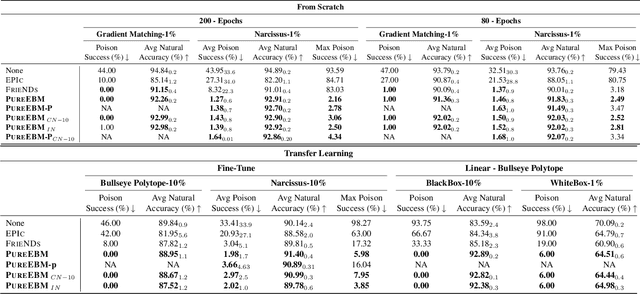
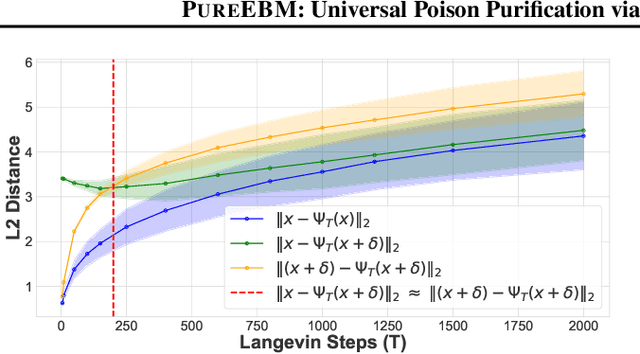

Abstract:Data poisoning attacks pose a significant threat to the integrity of machine learning models by leading to misclassification of target distribution data by injecting adversarial examples during training. Existing state-of-the-art (SoTA) defense methods suffer from limitations, such as significantly reduced generalization performance and significant overhead during training, making them impractical or limited for real-world applications. In response to this challenge, we introduce a universal data purification method that defends naturally trained classifiers from malicious white-, gray-, and black-box image poisons by applying a universal stochastic preprocessing step $\Psi_{T}(x)$, realized by iterative Langevin sampling of a convergent Energy Based Model (EBM) initialized with an image $x.$ Mid-run dynamics of $\Psi_{T}(x)$ purify poison information with minimal impact on features important to the generalization of a classifier network. We show that EBMs remain universal purifiers, even in the presence of poisoned EBM training data, and achieve SoTA defense on leading triggered and triggerless poisons. This work is a subset of a larger framework introduced in \pgen with a more detailed focus on EBM purification and poison defense.
PureGen: Universal Data Purification for Train-Time Poison Defense via Generative Model Dynamics
May 28, 2024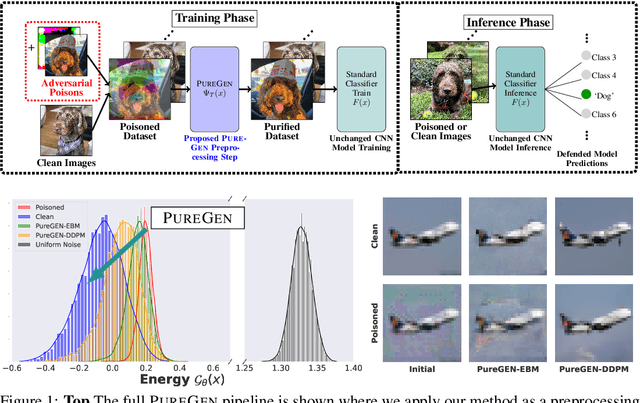
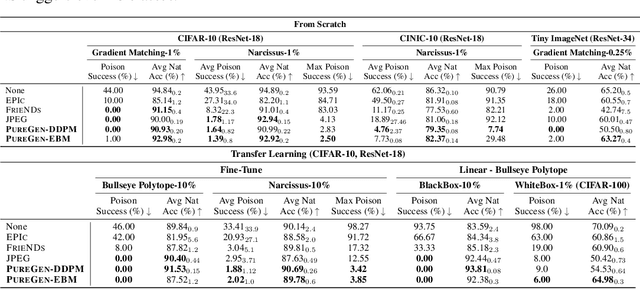


Abstract:Train-time data poisoning attacks threaten machine learning models by introducing adversarial examples during training, leading to misclassification. Current defense methods often reduce generalization performance, are attack-specific, and impose significant training overhead. To address this, we introduce a set of universal data purification methods using a stochastic transform, $\Psi(x)$, realized via iterative Langevin dynamics of Energy-Based Models (EBMs), Denoising Diffusion Probabilistic Models (DDPMs), or both. These approaches purify poisoned data with minimal impact on classifier generalization. Our specially trained EBMs and DDPMs provide state-of-the-art defense against various attacks (including Narcissus, Bullseye Polytope, Gradient Matching) on CIFAR-10, Tiny-ImageNet, and CINIC-10, without needing attack or classifier-specific information. We discuss performance trade-offs and show that our methods remain highly effective even with poisoned or distributionally shifted generative model training data.
Towards Composable Distributions of Latent Space Augmentations
Mar 06, 2023Abstract:We propose a composable framework for latent space image augmentation that allows for easy combination of multiple augmentations. Image augmentation has been shown to be an effective technique for improving the performance of a wide variety of image classification and generation tasks. Our framework is based on the Variational Autoencoder architecture and uses a novel approach for augmentation via linear transformation within the latent space itself. We explore losses and augmentation latent geometry to enforce the transformations to be composable and involuntary, thus allowing the transformations to be readily combined or inverted. Finally, we show these properties are better performing with certain pairs of augmentations, but we can transfer the latent space to other sets of augmentations to modify performance, effectively constraining the VAE's bottleneck to preserve the variance of specific augmentations and features of the image which we care about. We demonstrate the effectiveness of our approach with initial results on the MNIST dataset against both a standard VAE and a Conditional VAE. This latent augmentation method allows for much greater control and geometric interpretability of the latent space, making it a valuable tool for researchers and practitioners in the field.
Hypothesis Testing using Causal and Causal Variational Generative Models
Oct 20, 2022
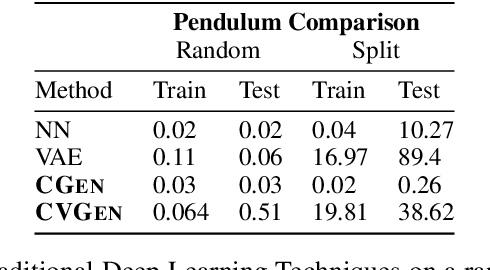
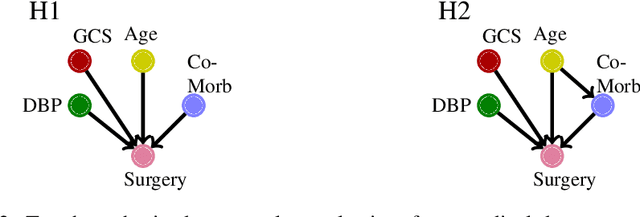

Abstract:Hypothesis testing and the usage of expert knowledge, or causal priors, has not been well explored in the context of generative models. We propose a novel set of generative architectures, Causal Gen and Causal Variational Gen, that can utilize nonparametric structural causal knowledge combined with a deep learning functional approximation. We show how, using a deliberate (non-random) split of training and testing data, these models can generalize better to similar, but out-of-distribution data points, than non-causal generative models and prediction models such as Variational autoencoders and Fully Connected Neural Networks. We explore using this generalization error as a proxy for causal model hypothesis testing. We further show how dropout can be used to learn functional relationships of structural models that are difficult to learn with traditional methods. We validate our methods on a synthetic pendulum dataset, as well as a trauma surgery ground level fall dataset.
De-Biasing Generative Models using Counterfactual Methods
Jul 05, 2022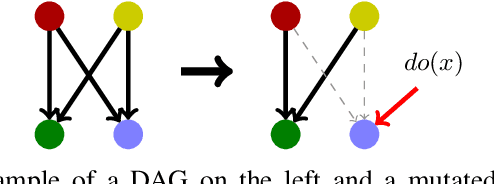
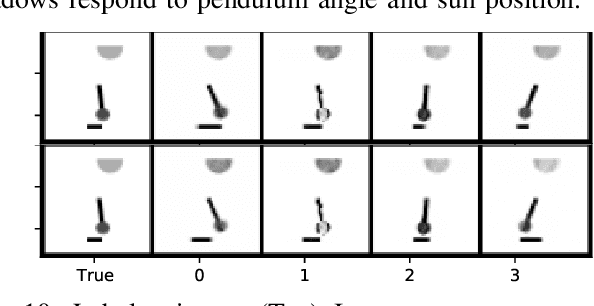
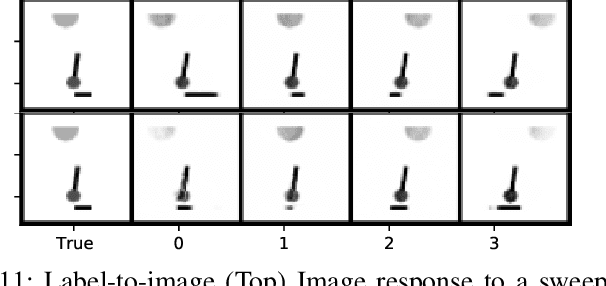
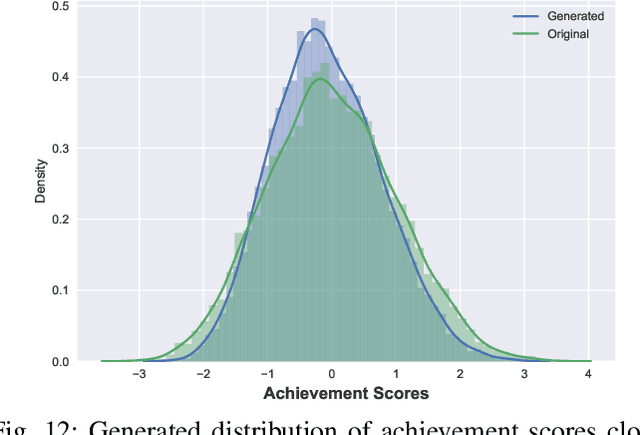
Abstract:Variational autoencoders (VAEs) and other generative methods have garnered growing interest not just for their generative properties but also for the ability to dis-entangle a low-dimensional latent variable space. However, few existing generative models take causality into account. We propose a new decoder based framework named the Causal Counterfactual Generative Model (CCGM), which includes a partially trainable causal layer in which a part of a causal model can be learned without significantly impacting reconstruction fidelity. By learning the causal relationships between image semantic labels or tabular variables, we can analyze biases, intervene on the generative model, and simulate new scenarios. Furthermore, by modifying the causal structure, we can generate samples outside the domain of the original training data and use such counterfactual models to de-bias datasets. Thus, datasets with known biases can still be used to train the causal generative model and learn the causal relationships, but we can produce de-biased datasets on the generative side. Our proposed method combines a causal latent space VAE model with specific modification to emphasize causal fidelity, enabling finer control over the causal layer and the ability to learn a robust intervention framework. We explore how better disentanglement of causal learning and encoding/decoding generates higher causal intervention quality. We also compare our model against similar research to demonstrate the need for explicit generative de-biasing beyond interventions. Our initial experiments show that our model can generate images and tabular data with high fidelity to the causal framework and accommodate explicit de-biasing to ignore undesired relationships in the causal data compared to the baseline.
 Add to Chrome
Add to Chrome Add to Firefox
Add to Firefox Add to Edge
Add to Edge